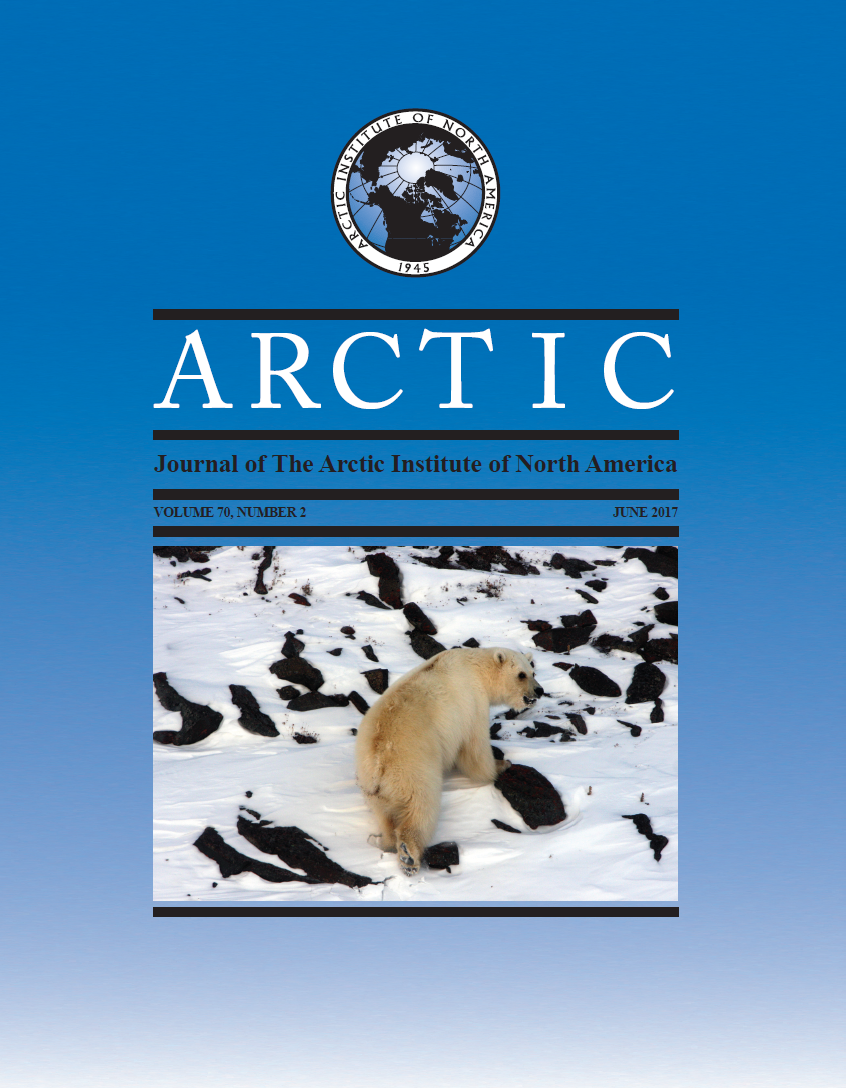Slush-Ice Berm Formation on the West Coast of Alaska
DOI:
https://doi.org/10.14430/arctic4644Ключевые слова:
slush-ice berm, community observations, local knowledge, synoptic, weather, coastal, Alaska, sea ice, ArcticАннотация
Some coastal communities in western Alaska have observed the occurrence of “slush-ice berms.” These features typically form during freeze-up, when ice crystal – laden water accumulates in piles on the shore. Slush-ice berms can protect towns from storm surge, and they can limit access to the water. Local observations from the communities of Gambell, Shaktoolik, Shishmaref, and Wales were synthesized to develop a taxonomy of slush-ice berm types and a conceptual process model that describes how they form and decay. Results indicated two types of slush-ice berm formation processes: in situ (forming in place) and advective (pushed in by storm winds). Several formation mechanisms were noted for the crystals that compose in situ berms. Cold air temperatures cool the surface of the water, and winds that translate surface cooling through a greater depth aid crystal formation. Snow landing in the water cools via melting of the snow and by contributing crystals directly to the water. A negative surge can expose the wet beach to cold air, allowing crystals to form on the beach, which are then picked up by waves. Slush crystals for advective berm events form offshore. Winds move the slush towards shore, where it accumulates, and wind-induced waves move it up onto the beach.


